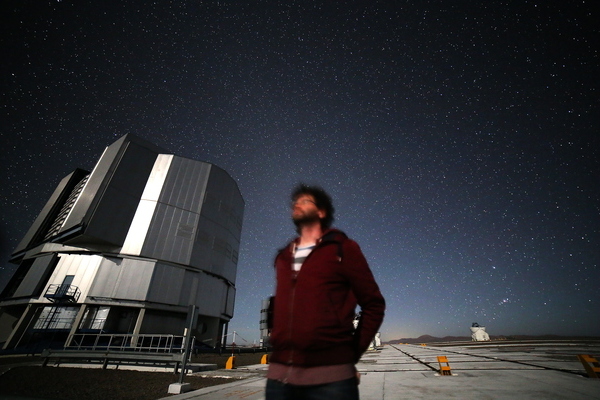About
 I'm Roger Wesson, an astronomer working at Cardiff University, where I investigate the dust associated with core-collapse supernovae and their progenitors. Previously I was at University College London, working in the sndust group. Before that, I spent four years in Chile, where I was a Fellow at the European Southern Observatory and spent 80 nights a year supporting operations at the Very Large Telescope, including nighttime support on UT3 (Melipal). And before ESO, I was an undergraduate, postgraduate and postdoc at UCL. These pages contain information about my research.
I'm Roger Wesson, an astronomer working at Cardiff University, where I investigate the dust associated with core-collapse supernovae and their progenitors. Previously I was at University College London, working in the sndust group. Before that, I spent four years in Chile, where I was a Fellow at the European Southern Observatory and spent 80 nights a year supporting operations at the Very Large Telescope, including nighttime support on UT3 (Melipal). And before ESO, I was an undergraduate, postgraduate and postdoc at UCL. These pages contain information about my research.
Research
I'm interested in two main topics: firstly, core-collapse supernovae and the dust they produce. How much do they make, when do they make it, and what ultimately happens to it? And secondly, chemical abundances in planetary nebulae and HII regions. These objects are now believed to contain some amount of cold, hydrogen-deficient gas, which affects abundance measurements. What is the origin of this material? Can we constrain its physical conditions and determine accurately the total heavy element content of these nebulae?
My most recent 5 publications:
- August 2024: MUSE spectroscopy of the high abundance discrepancy planetary nebula NGC 6153
- July 2024: Deep JWST/NIRCam imaging of Supernova 1987A
- June 2024: The jets of the extreme bipolar planetary nebula NGC 6302
- June 2024: 3D maps of CO and SiO in SN1987A - comparison with explosion models
- June 2024: Dust formation in core collapse supernova ejecta
See the full list of 193 papers on my publications page, and where in the sky I've been looking on my sky map page
Codes
Some of the codes I've written:
- alfa - automated line fitting algorithm
- neat - nebular empirical analysis tool
- astro-ph sorter - list up to 30 days of astro-ph abstracts, sorted according to your research interests
- airmass.org - visibility plotting tool for observation planning
See more on my codes page.
Photography
I do a lot of astrophotography when I find myself in places with dark skies, and I am an ESO photo ambassador. More details on my photography page.
